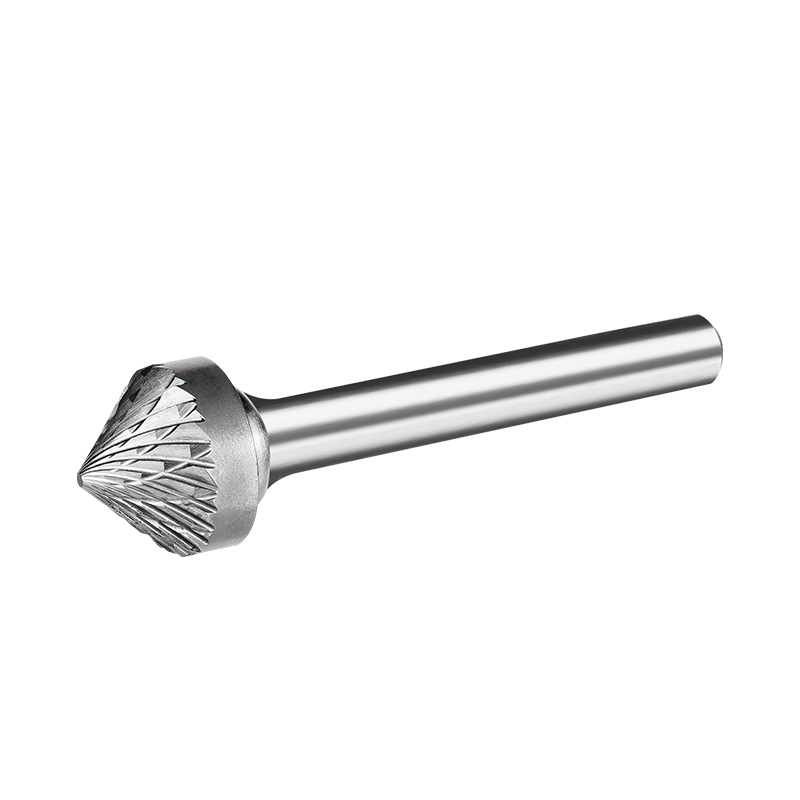Carbide Rotary Bur is a precision tool widely used in various industries for cutting, grinding, and shaping materials. Their ability to withstand high speeds and maintain sharpness makes them indispensable in applications such as metalworking, woodworking, and dental prosthetics. However, with the increased efficiency that high-speed rotation offers, there are also heightened safety concerns that must be addressed to prevent accidents and ensure the well-being of operators. This article will explore the safety considerations when using Carbide Rotary Burs at high speeds.

It is essential to understand the characteristics of Carbide Rotary Burs. Made from tungsten carbide, these burs are known for their hardness and durability. However, this material's brittleness requires careful handling, especially under the stress of high-speed rotation. The risk of shattering or breaking increases with speed, which can cause flying debris and potential injury.
To mitigate these risks, operators must ensure that the Carbide Rotary Bur is securely mounted in the tool holder. A loose or improperly tightened bur can wobble or even detach during operation, causing catastrophic failure. Regular checks and torque specifications must be followed to guarantee a secure fit.
Vibration is another critical factor when using Carbide Rotary Burs at high speeds. Excessive vibration not only affects the quality of the workpiece but also increases the stress on the bur, potentially causing breakage. To reduce vibration, it is recommended to use burs with a suitable shank diameter that matches the tool holder and to balance the bur if it is used at high speeds.
Personal protective equipment (PPE) is a must when working with Carbide Rotary Burs. Safety glasses or goggles should be worn at all times to protect the eyes from flying debris. Hearing protection is also essential due to the noise generated by high-speed rotation. Additionally, a face shield or mask can protect the operator's face and respiratory system from dust and particles produced during the cutting process.
The work environment should be well-lit and free from clutter to prevent tripping hazards. Operators should also maintain a clear line of sight to the work area to react quickly to any potential issues. It is crucial to keep hands and fingers away from the path of the rotating Carbide Rotary Bur to avoid contact injuries.
Proper tool maintenance is another safety aspect that cannot be overlooked. Regular inspection of the Carbide Rotary Bur for signs of wear, damage, or excessive heat is necessary. A dull or damaged but can cause increased torque and stress, which may result in breakage. Immediate replacement of any compromised but is essential to maintain safety and efficiency.
When using Carbide Rotary Burs at high speeds, it is also important to consider the material being worked on. Different materials require different speeds and feed rates to achieve suitable results. Overloading the bur with too much material or pushing too hard can cause the bur to bind, causing increased stress and potential breakage.
Finally, operators should be well-trained in the use of Carbide Rotary Burs and be familiar with the specific safety guidelines provided by the manufacturer. Understanding the limitations and capabilities of the bur, as well as the machine it is attached to, is crucial for safe operation.
In conclusion, the high-speed rotation of Carbide Rotary Burs offers significant benefits in terms of efficiency and precision, but it also presents unique safety challenges. By adhering to safety protocols, using proper PPE, maintaining tools, and understanding the characteristics of the bur and the material being worked on, operators can greatly reduce the risks associated with using Carbide Rotary Burs at high speeds. Safety should always be the top priority in any workshop or industrial setting where these powerful tools are in use.